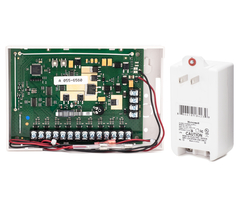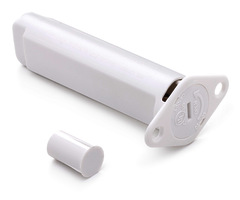Wireless Peripheral Sensors





A wireless peripheral sensor is set up with a wireless zone on a security system. When the device is triggered, a fault will be displayed for that zone, alerting the user to the situation. Most wireless zones are named in a way that allows a user can quickly identify the problem. For instance, a user might name the wireless zone that is associated with their front door contact “front door” so that when that zone is faulted, they will know that their front door has been opened. By setting up wireless peripheral sensors in this way, a user can quickly and easily determine the cause of the issue and decide what action should be taken.
If a user has an alarm plan that includes central station monitoring, they can also program their wireless peripheral sensors to immediately contact the appropriate response team when activated. One way that a user might do this is to have the central station immediately contact the fire department if a wireless smoke detector is activated. Another possibility is to have the police immediately dispatched if a wireless glass break detector is triggered while the system is set to arm away. Setting up your system in this way can protect both your life and your property.
Many users find wireless peripheral sensors to be extremely convenient to both install and program with the panel. Since they are wireless, there will be no need to awkwardly fish wires through the wall and navigate them to the security panel. This means that most wireless peripheral sensors can be fully installed by end users, with no assistance from a professional.
Most wireless peripheral sensors can be easily learned-in with a security system, and their settings can be quickly adjusted if necessary. If there’s ever an issue with the sensor, the security system will alert the user to the trouble so that they can fix the problem.
When working with wireless peripheral sensors, there are a few things that should be kept in mind. One is the range of the wireless sensor. Different wireless sensors can operate at various distances away from the security panel. Check the recommended range of your wireless peripheral sensors, and make sure that they are close enough with the security system for maximum functionality. If you ever need to extend this range, it may be possible to do so using a wireless repeater. You will also want to make note of obstructions, such as walls or large metal objects, that may reduce the range of your wireless peripheral sensors. Users should also be aware that wireless peripheral sensors have a limited battery life, and the batteries inside these devices will eventually need to be replaced. You security panel will let you know when the battery for your wireless peripheral sensor is getting low so that you can replace it before it dies.
Most wireless peripheral sensors fall into one of three categories. These include security devices, environmental devices and life-safety devices. Security devices are used to alert you if an intruder attempts to break into your property. Some security devices include door and window contacts and motion sensors. Environmental devices inform you about troubling external factors that could adversely affect the building. Some of these devices include freeze sensors and flood detectors. Finally, life-safety devices are used to quickly alert building occupants in the event of a life-threatening situation. These devices include smoke detectors and carbon monoxide sensors.
Wireless peripheral sensors are susceptible to hacking attacks like jamming and spoofing. While we perceive the risk to be low since such hacks require specialized equipment, it is important that consumers understand the risks of the devices they are putting in their home or business.







